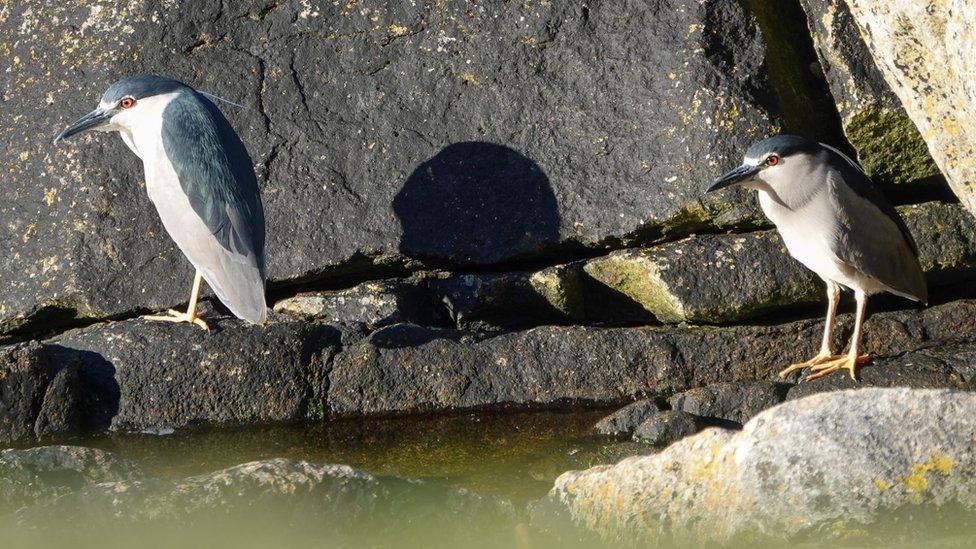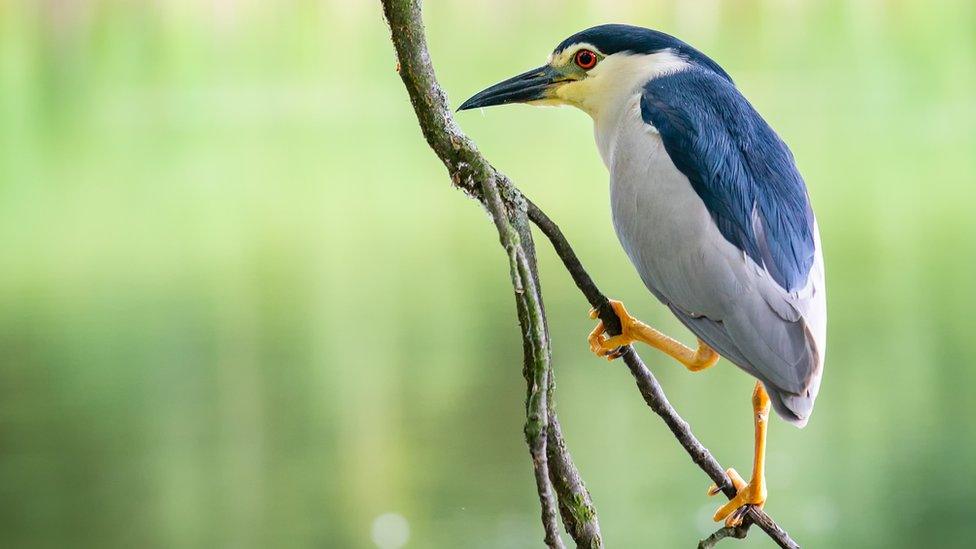Black-crowned night herons spotted on St Kilda
- Published

Two of the four black-crowned night herons seen on St Kilda
Droughts in continental Europe are a possible cause for sightings of a Mediterranean bird in Britain and Ireland, say ornithologists.
Black-crowned night herons have been spotted on Scotland's remote St Kilda archipelago, as well as County Wexford in Ireland and Dorset in England.
The British Trust for Ornithology (BTO), external said the numbers were potentially unprecedented but not unexpected.
It said warmer climate species have been appearing for a number of years.
A BTO spokesman said climate change had created a "push and pull situation".

The herons are native to temperate and tropical regions of the world
Hotter conditions have made it tougher for some species in their native territories, while warmer weather in the UK and Ireland has made it easier for the birds to establish themselves there.
BTO said some Mediterranean birds, such as little egret, were now breeding in parts of the UK.
The Scottish Ornithologists' Club has said there could be a total of eight black-crowned herons in Scotland. It said the highest previous number was 12 in 1987.
The birds are native to temperate and tropical regions of the world. In Europe, they are found in Mediterranean areas but also Germany, Poland and Czech Republic.
BirdGuides, external said severe drought conditions in Spain and southern France could be possibly behind the recent influx.
It has received reports of the herons from Scotland, England and Ireland, including seven at Drinagh in County Wexford and two at Iford in Dorset.
Wildlife rangers have been among those to spot the birds in St Kilda. Three adults and a juvenile have been seen so far on the main island of Hirta.

